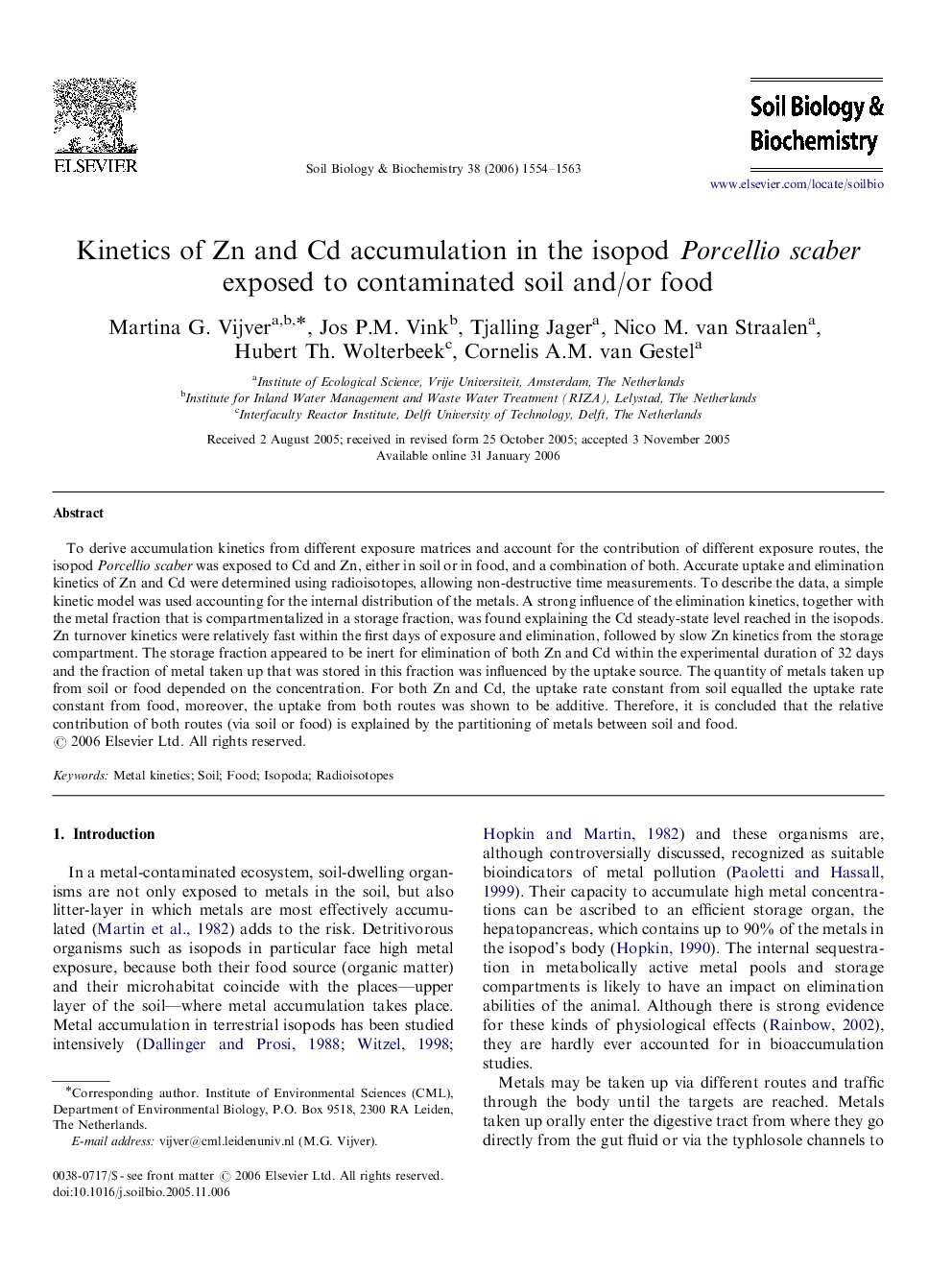| Article ID | Journal | Published Year | Pages | File Type |
|---|---|---|---|---|
| 2026559 | Soil Biology and Biochemistry | 2006 | 10 Pages |
To derive accumulation kinetics from different exposure matrices and account for the contribution of different exposure routes, the isopod Porcellio scaber was exposed to Cd and Zn, either in soil or in food, and a combination of both. Accurate uptake and elimination kinetics of Zn and Cd were determined using radioisotopes, allowing non-destructive time measurements. To describe the data, a simple kinetic model was used accounting for the internal distribution of the metals. A strong influence of the elimination kinetics, together with the metal fraction that is compartmentalized in a storage fraction, was found explaining the Cd steady-state level reached in the isopods. Zn turnover kinetics were relatively fast within the first days of exposure and elimination, followed by slow Zn kinetics from the storage compartment. The storage fraction appeared to be inert for elimination of both Zn and Cd within the experimental duration of 32 days and the fraction of metal taken up that was stored in this fraction was influenced by the uptake source. The quantity of metals taken up from soil or food depended on the concentration. For both Zn and Cd, the uptake rate constant from soil equalled the uptake rate constant from food, moreover, the uptake from both routes was shown to be additive. Therefore, it is concluded that the relative contribution of both routes (via soil or food) is explained by the partitioning of metals between soil and food.
